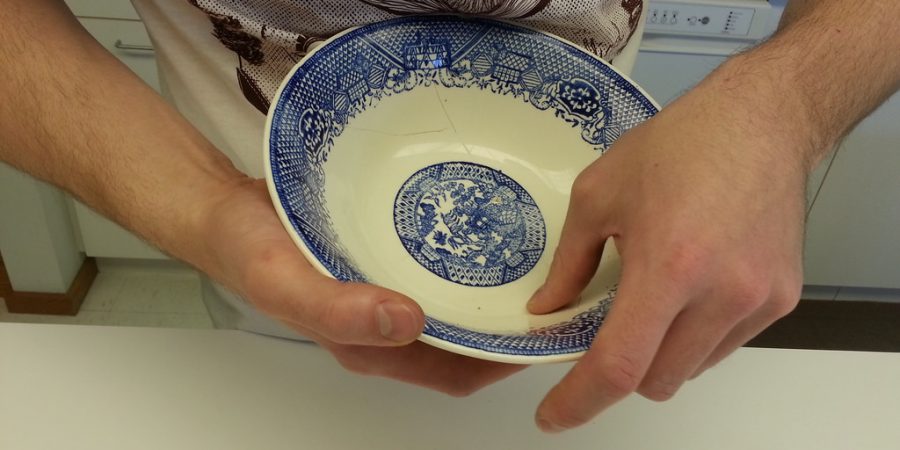
As a plastic surgeon and a craftsman, I delight in solving problems requiring repair, whether it is in my professional or my private life. Not long ago, I broke a plate, one I didn’t want to part with. I have long put things together with 5-minute epoxy, but this time the aesthetics of the repair were such that it wasn’t presentable for return to use.
I’d read about Kintsugi, the Japanese art of beautiful repair, in a newspaper article several years earlier, and had bookmarked the page for future reference. Then a guest in my home knocked over a much loved black ceramic vase, breaking it into many pieces. With the plate broken and badly repaired with epoxy, and now the vase calling for my attention or discard, I decided to learn more about Kintsugi. I started looking for some online instruction and came across this wonderful video and Tumblr blog. If you watch this, I think you will find it truly inspiring.
“This idea, the idea of embracing our wounds, our brokenness, is manifested quite poetically in the Japanese mending practice of Kintsugi. I realized how it spoke to me of what plastic surgery does, for the somewhat broken parts of my patients, both the body and the psyche; for their sense of self.
The transformations I have seen in many patients over the years have often been miraculous, and I believe there is a metaphoric connection. If you are interested in Kintsugi, there is a series of videos showing detailed, step by step technique. Here is a link to the first:
(my early, primitive attempt at a form of kintsugi…I will be more formal and traditional with my next effort) “We restore, rebuild, and make whole those parts which nature hath given, but which fortune has taken away. Not so much that it may delight the eye, but that it might buoy up the spirit, and help the mind of the afflicted.” – Gaspar Tagliocozzi 16th century Italian surgeon

Dr. Gelfant’s Living Beautifully Blog
Join our mailing list and receive updates when a new blog is posted by Dr. Benjamin Gelfant.